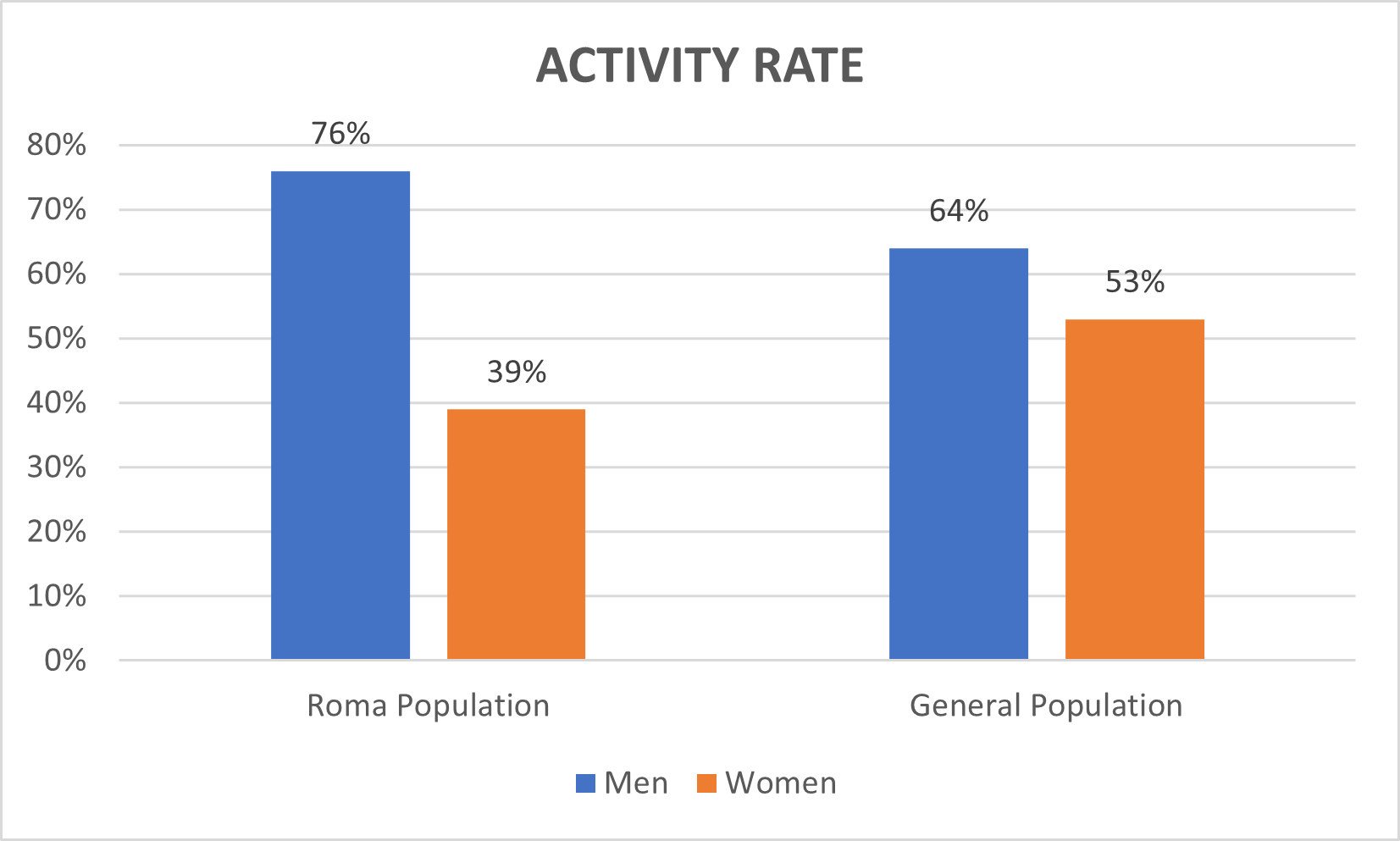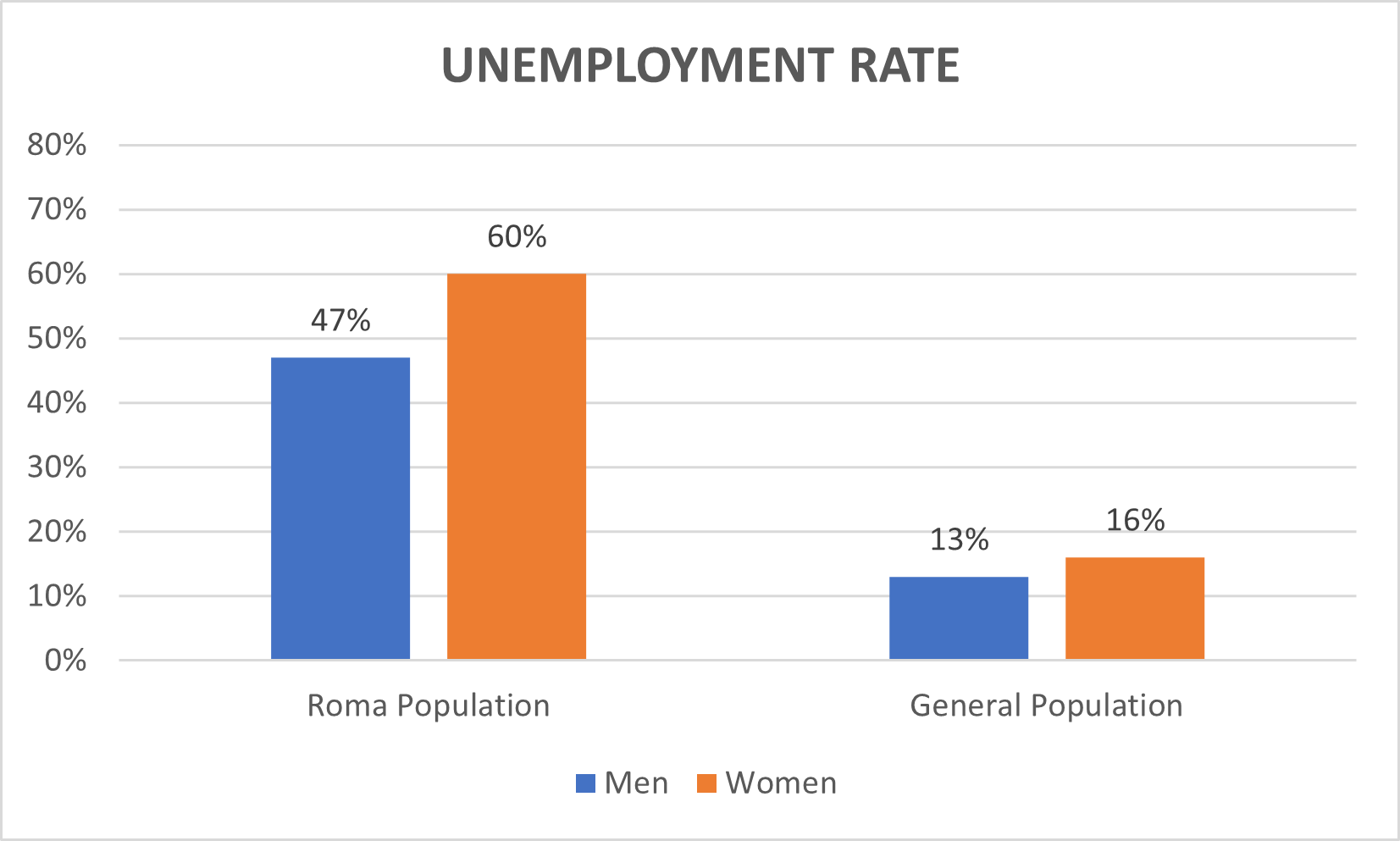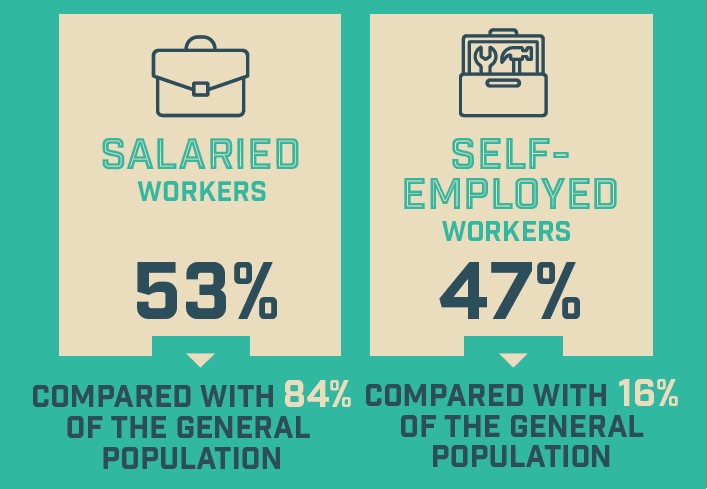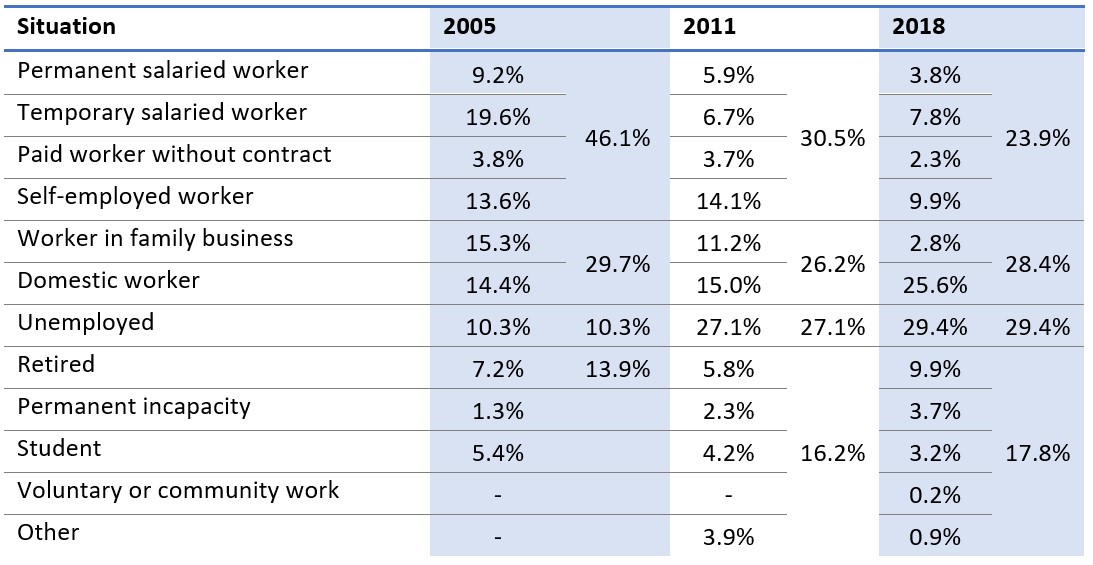In figures[editar]
Our series of studies on the situation of the Roma population in Spain in terms of employment carried out in 2005, 2011 and 2018 demonstrates that the 2005 employment indicators, which already showed a clear inequality at that time, now indicate an even worse situation, with the gap between the Roma population and the general population growing ever wider.With an activity rate very similar between the Roma population and the general population (56% of Roma people are in work or unemployed), the unemployment rate stands at 52%, more than three times the rate found in the general population (14.5%).

Regarding the gender gap, unemployment among Roma women is 60%, being noticeably wider than the gap between women and men in the general population. However, when we look at activity rate by gender we find highly significant differences. For example, the activity rate for Roma women is 38% while the rate for men is 76%, due to the fact that many women devote their time to domestic work and family responsibilities.
Little work and conditions of job insecurity
The large amount of self-employment work and the low quality of salaried work, with rates of temporary work standing at 73% and 16% of paid workers not having a contract, together paint a picture of weak employment protection and ensuing difficulty in accessing unemployment benefits and retirement pensions, with pensions being mainly non-contributory. It is worth highlighting that 19.3% of Roma people at risk of poverty are in the labour market and have a job, and therefore can be considered to belong to the category of the working poor.
More than 70% of unemployed Roma people have found themselves in a situation of long-term unemployment (more than one year) while 35% are in a situation of very long-term unemployment (more than four years).
Among Roma people, only 53% of those in work are salaried workers (compared with more than 80% of the general population), while self-employed people represent 47% (compared with less than 20% of the general population).
This high rate of self-employment is due to the prevalence of market-selling and street-selling, which continue to be the main forms of work for Roma people, with more than a third of working Roma people, mostly men, being involved in these activities. Roma women are also involved in these forms of work, but women in this situation are generally not considered to be doing a job, as their work is considered to be part of their domestic duties or family responsibilities. For this reason they suffer from a greater lack of protection than men.

63% of young Roma people aged 16 to 29 are neither in work nor in education.
In the general population this percentage has decreased to 15% from the high figures seen during the worst years of the crisis, in the Roma population is still very high.
EVOLUTION OF THE LABOUR SITUATION OF ROMA PEOPLE

- Comparative study on the situation of the Roma population in Spain in relation to employment and poverty.This third report presents the results of a study carried out in 2018, at a time when the employment picture was complex.
- Roma population, employment and social inclusion 2011. A comparative study: Spanish and Eastern European Roma populationsThe second study, in 2012, was performed in a completely different economic and employment context due to the devastating effects of the 2008 crisis on the Spanish job market.
- Roma population and employment. A comparative study.The first study was carried out in 2005 at a time of ample job opportunities, with unemployment at its lowest point in recent Spanish history.







